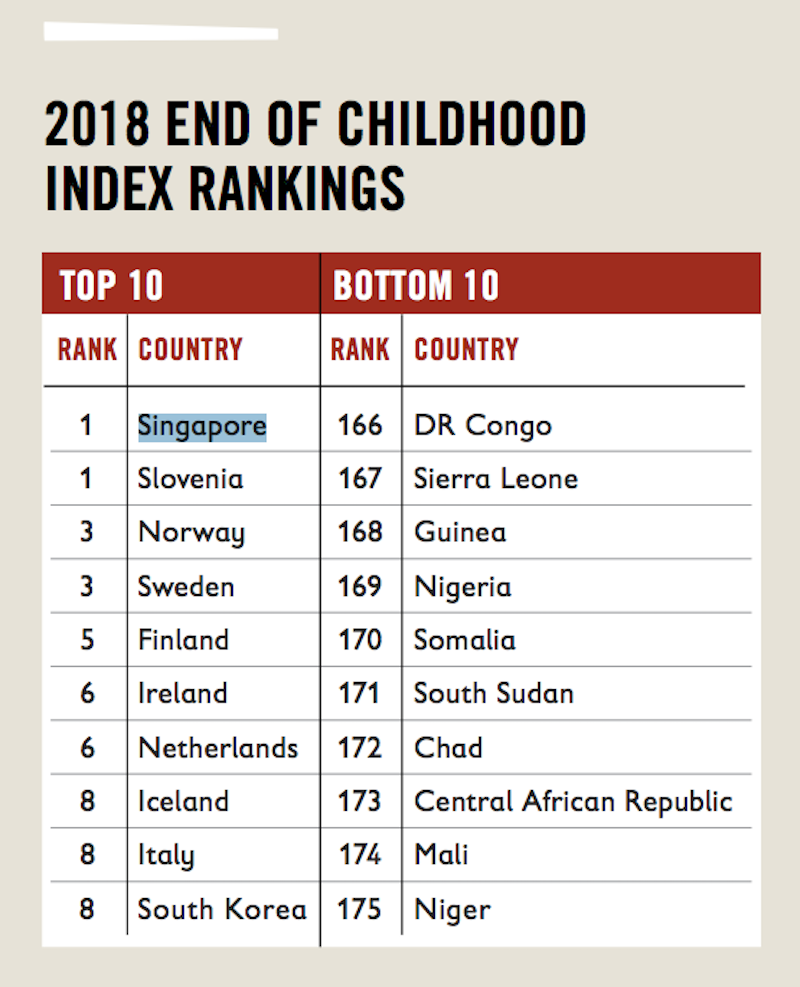Singapore and Slovenia tie for the title of the best country in the world to have a childhood, according to a report published by non-governmental organization Save the Children.
We don’t know about the NGO, but our childhoods in the 90s were filled with copious amounts of tuition classes, extracurricular schools and getting our asses whooped for failing grades. But we digress.
Singapore and Slovenia were assessed to have the best environments in the world for children to grow up in, where kids are most likely to fully experience childhood for emotional, social and physical development, as well as play.
“Singapore is a great place for children to grow up with good access to high-quality education and medical care services, while also being one of the safest countries in the world,” said Save the Children’s Asia regional director Hassan Noor Saadi.
“Threats to childhood that plague other countries — like early marriage, poor access to education and war — simply don’t exist in Singapore, or at extremely low levels.”
How Save the Children measures this is through indicators called “Childhood Enders” — basically events that mark the end of an intact childhood. These “childhood enders” include: child dies, malnutrition permanently impairs child’s development, child leaves or fails to enter school, child begins work life, child marries, child has a child, and child is a victim of extreme violence. Depressing stuff, especially when you know that these are very real hardships children in other countries experience.
Countries are scored and ranked according to performance across this set of enders, revealing where childhood is most and least threatened. In this case, children in Singapore enjoy the best childhood, with countries such as Norway, Sweden, Finland, Ireland making it to the top 10 of the ranking. Only Singapore and South Korea (tying with Iceland and Italy for eighth place) are the only two Asian countries that appear in the top-tier list.

On the other end of the list, children in African countries are least likely to fully experience childhood, with Niger at the very bottom.
Save the Children pointed out that the United States (#36), Russia (#37) and China (#40) may be the three most powerful countries in the world, but all three badly trail most of Western Europe in helping children reach their full potential.
The NGO also found 10 major global trends that require urgent action, including how child labor rates have risen in sub-Saharan Africa; how the global number of adolescent pregnancies is set to increase; and the fact that the world is now witnessing the highest levels of displacement on record.
Perhaps being overwhelmed by too much tuition lessons should be the least of our children’s worries when compared to the actual problems faced by their peers around the world.



